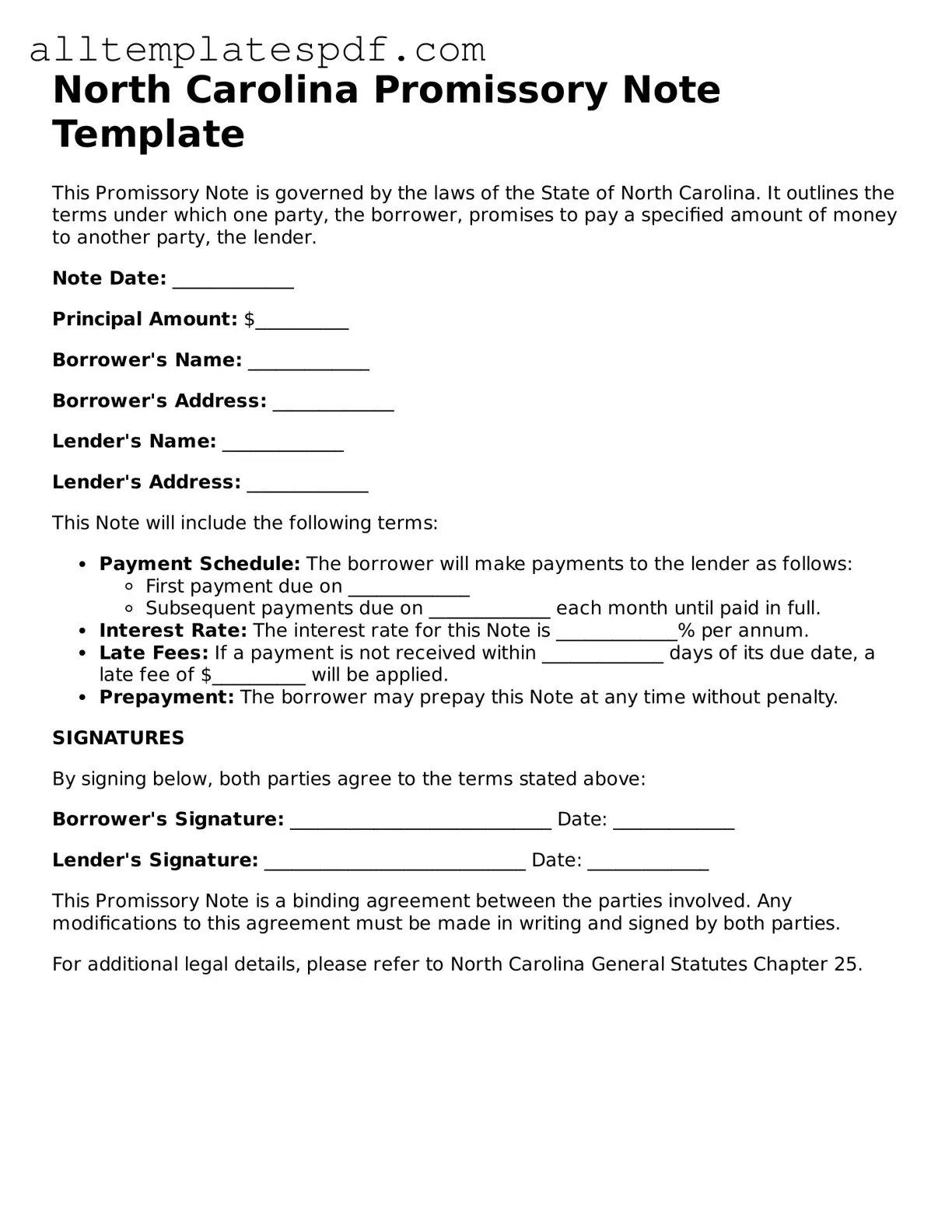Blank Promissory Note Template for the State of North Carolina
A North Carolina Promissory Note is a legal document that outlines a borrower's promise to repay a specified amount of money to a lender under agreed-upon terms. This form serves as a crucial tool in financial transactions, ensuring that both parties understand their rights and obligations. If you're ready to create your own Promissory Note, click the button below to get started.
Open Editor
